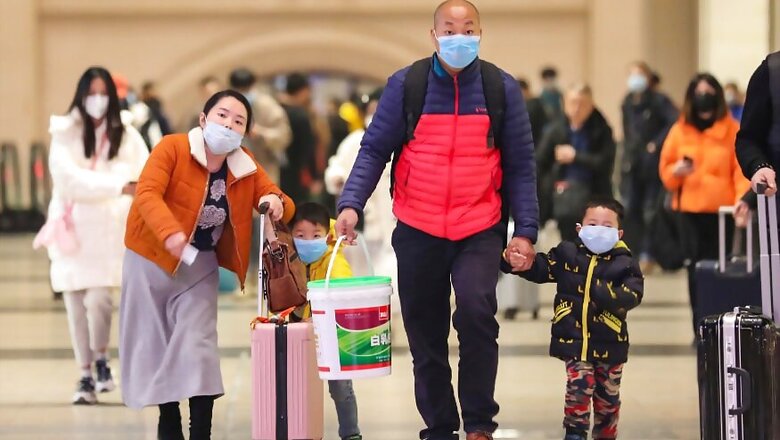
views
If Wuhan could be compared to a U.S. city, it might be Pittsburgh — a much bigger, much hotter Pittsburgh.
Wuhan, an industrial city in central China, straddles a river, the Yangtze. It is home to a troubled and declining steel industry. It is a university town filled with college students.
The comparisons don’t go much further. Wuhan has a population of more than 11 million people, the equivalent of 36 Pittsburghs. In terms of college students alone, roughly 1 million are enrolled there, according to government figures. Summer temperatures can approach 100 degrees, with heavy humidity. Its traditional dish, and one of China’s favorite noshes, is a pungent pasta concoction called reganmian, or “hot dry noodles.”
Wuhan is also the epicenter of a viral outbreak that is worrying the world. On Thursday, Chinese officials sharply limited travel to and from the city in an effort to contain a coronavirus that so far has killed at least 25 people and infected hundreds more. The restrictions hit the city at the peak of the travel period for the Lunar New Year holiday, meaning many residents may miss their families and loved ones this week.
Wuhan embodies China’s rise as a global economic power, in all its complexities. Disposable income per person soared more than sixfold between 2002 and 2018, according to government figures compiled by CEIC Data, an information provider. The area is home to vast automotive factories making cars for General Motors, Nissan, Honda and other global and local brands. The city has become a popular destination for foreign investment.
The Chinese government thinks so highly of the city’s image that Xi Jinping, the country’s leader, met Prime Minister Narendra Modi of India there two years ago. The two walked along the city’s East Lake, building what Chinese state-run media came to call the Wuhan spirit between the two regional rivals.
The boom has come with problems. Heavy pollution has provoked protests. Its streets are often clogged with traffic. Its steel factories, long a backbone of the local economy, have struggled along with the rest of the inefficient industry in China with overcapacity and pollution problems, leading Beijing to combine the state-owned local giant, Wuhan Steel, with another company.
Wuhan has long been a center of commerce in China thanks to its position along the Yangtze River, a major trade route, and it remains a key transportation hub, leading some in China to compare it to Chicago. It was also the site of one formative event in Chinese history: a military mutiny in 1911 that led to the collapse of the Qing dynasty and ushered in the Republic of China.
Wuhan held a special place in the heart of Mao Zedong, who famously took a swim in the Yangtze there in 1966 to show his vitality. This was at the beginning of the Cultural Revolution, which tore Wuhan apart as it did other cities.
As China took off in the modern era, local leaders tried to burnish its image and show Wuhan taking part in the country’s rise. They explored adopting a slogan and considered “Great River, Great Lake, Great Wuhan” and “River Capital of the East, Livable Wuhan,” among others.
They settled on “Wuhan, Different Everyday!”
Carlos Tejada c.2020 The New York Times Company




















Comments
0 comment